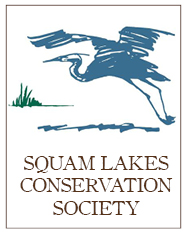National Register of Historic Places
In 2009 a group of local conservationists, historians, preservationists and concerned citizens, with support from the Squam Lakes Conservation Society, created the Squam National Register of Historic Places initiative (Squam NRHP.) The main goal of the Committee was to preserve the unique character of the watershed by recognizing and protecting historic places: the iconic barns, farms, camps and landscape features that define the Squam landscape. Their goal of protecting the cultural heritage of the watershed was a natural complement to SLCS’s ongoing efforts to conserve land and water quality.
After a three year effort by the Squam NRHP, in 2012 the National Park Service endorsed a Multiple Property Documentation Form placing the entire Squam watershed on the National Register of Historic Places. Squam is now the largest watershed-wide listing in NH and among the largest anywhere in the country. Five individual properties anchored the listing: Beede Farm, Burleigh Brae and Webster Boathouse, Camp Carnes, True Farm and Pratt Family Camps.
National Register designation is strictly honorific: there are no restrictions placed on landowners in terms of building renovation or design review. Furthermore, the property remains private and does not require any public access. With each property listed, protection for the Squam watershed at-large is increased and its cultural heritage is further preserved.
In 2013 the Squam project was recognized by New Hampshire Preservation Alliance as a recipient of a 2013 Preservation Achievement Award for providing a “significant and innovative contribution to the preservation of historic resources in New Hampshire.”
Having achieved its major purposes, the committee disbanded at the end of 2016. In all, seventeen properties have been listed on the National Register of Historic Places. They include more than 275 resources on about 1200 acres, most of it undeveloped, but historically associated. The resources are wide-ranging: an island and a number of shorefront camps, several family camp enclaves and their diverse outbuildings, farmsteads with significant agricultural outbuildings, Rockywold-Deephaven Camps (a large organized camp for families), Church Island, and a country estate. An historic district of eighteen cottages (with sixteen different owners) that encompasses the earliest summer development on Squam has also been listed. The project received funding from more than 150 donors, enabling the committee to establish a grant pool to assist owners with the costs associated with nominating their properties. Subsidies were provided to about half of the owners undertaking nominations. The grant pool was fully expended in 2016.
The Squam NRHP cover document, “Squam: The Evolution and Preservation of a Lakeside Community,”, is available for $25 from SLCS.
